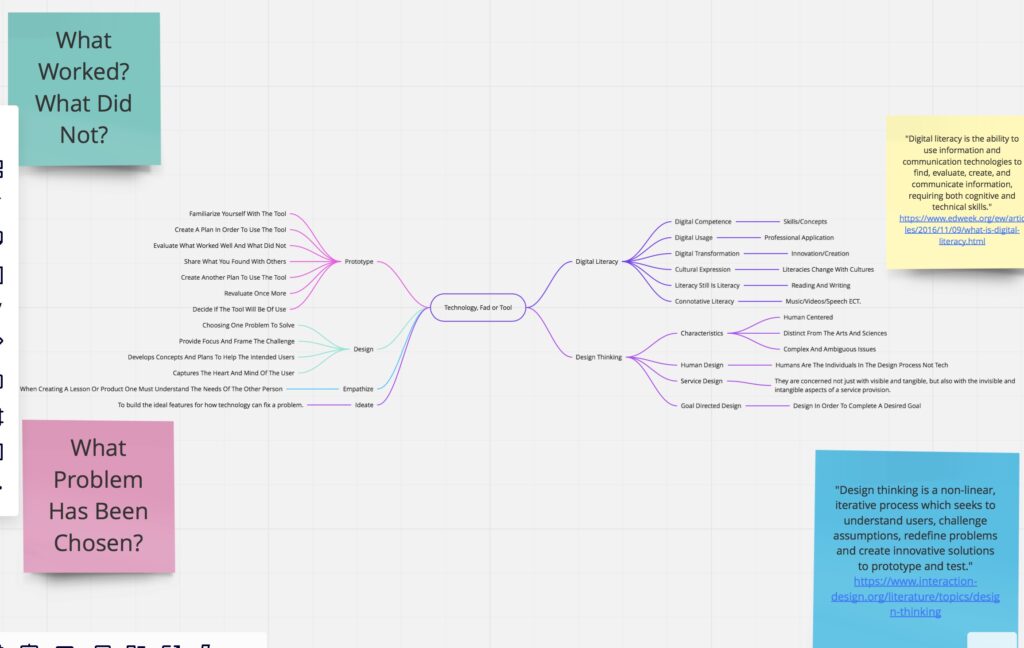
Students as well as teachers alike live in a modern world where technology is ever changing. Technology is constantly changing the methods that students learn and the methods that teachers teach. Digital literacy is a major skill that is taught to students in the modern day classroom. “These literacies encompass the abilities to locate, use, summarize, evaluate, create, and communicate information while using digital technologies and web-based platforms.” (https://extend.ecampusontario.ca/technologist-digital-literacies/) In order for students to succeed in the workplace once they have finished high school and post-secondary education opportunities they must be digitally literate. Educators are responsible to teach students these skills.

Design Thinking has five different steps to the approach that educators must take into consideration as they are teaching their students. Teachers must empathize with the learning process of their students. Teachers must place themselves in the shoes of their students in order to gain a sense of the information that they will absorb from their lesson. Teachers must also clearly define one problem that they wish to solve in a lesson or with a project. The must only choose one, a broad scale of problems will easily lead to confusion with the teacher and with students. Teachers must then move to the ideate point in the process. This is where an educator should have multiple ideas on how to solve the problem that they have chosen in order that it will work for all of the students inside their classroom. Teachers then must prototype. They must create a product that can be tested in the future. Teachers must create a tool or a lesson in order so that they can test it to see if it solves the problem that they have chosen. Lastly, teachers need to test the prototype that they have created. It is important that they ask for feedback from their colleagues as well as their students after they have tested the prototype in order for them to evaluate what was successful and what needs to change in the future.

Teachers must also be aware about the limitations that technology has on some students within their classrooms. Not all students have access to wifi, not all students have access to a laptop, desktop or mobile device. Teachers must be aware of the resources that students have inside the classroom and give students adequate time to complete the work asked of them within the classroom because it is unfair to assume that each child has access to the internet when they return to their homes.
